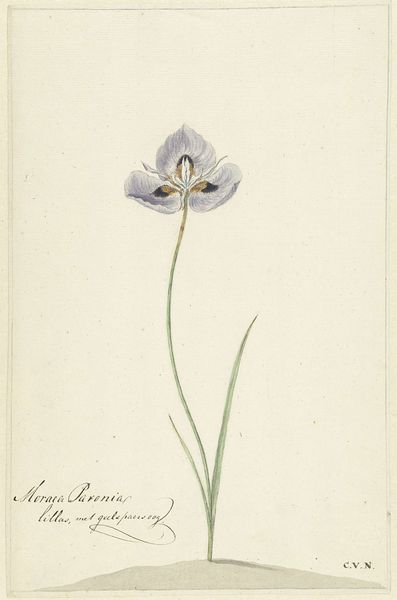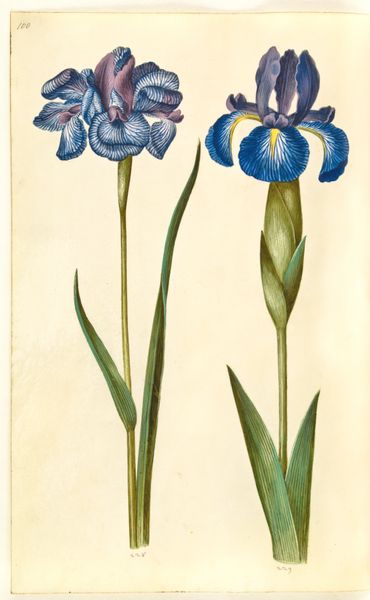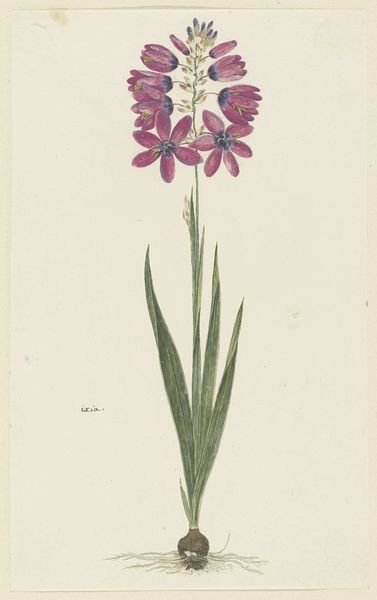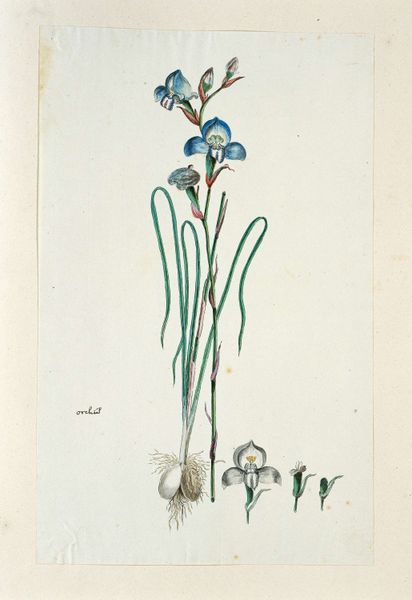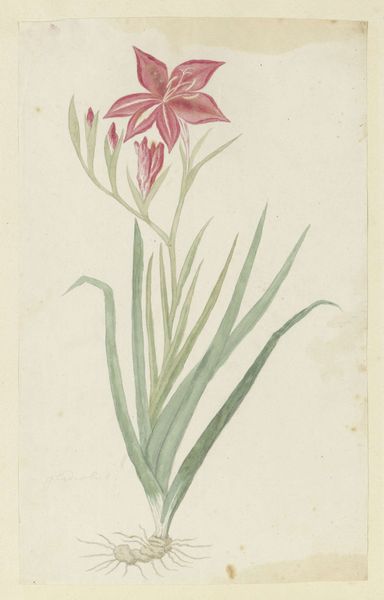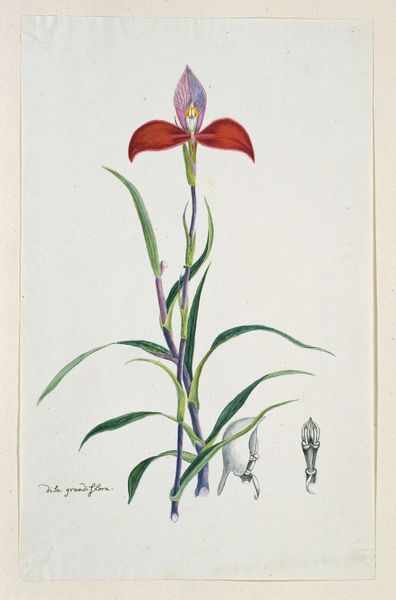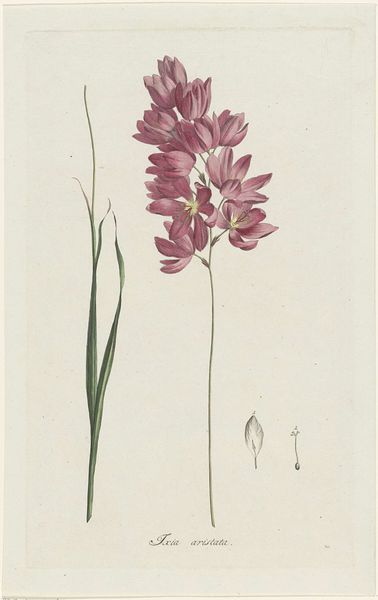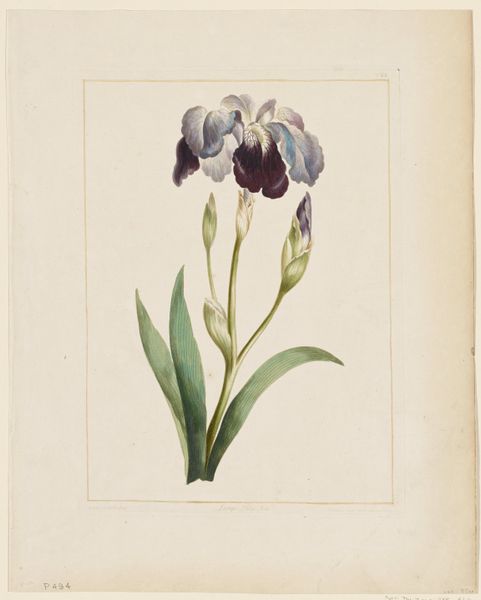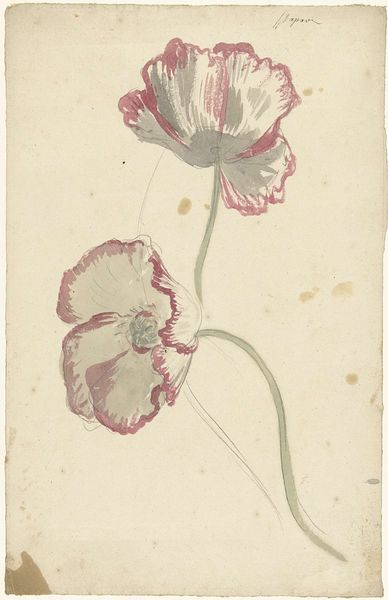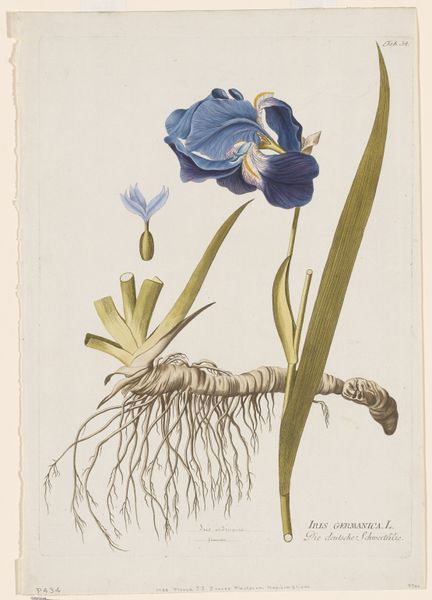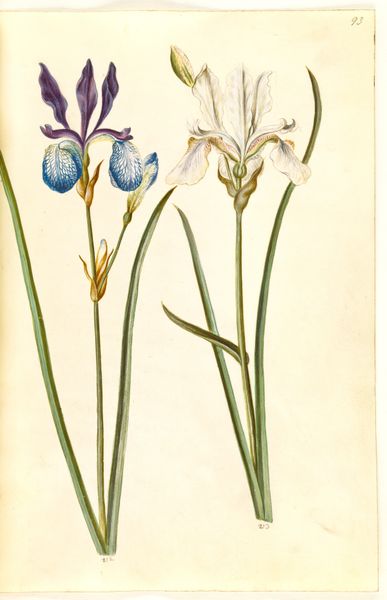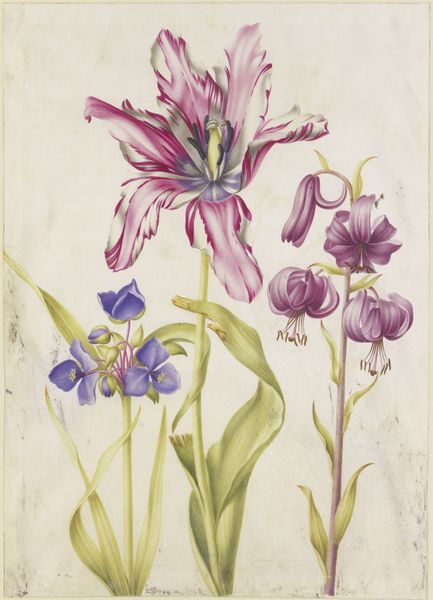
Dimensions: height 660 mm, width 480 mm, height 430 mm, width 270 mm, height mm, width mm
Copyright: Rijks Museum: Open Domain
Curator: Oh, this is striking! At first glance, it feels like something from a fairytale, the way the artist captures such intense color in this delicate form. It’s as if this bloom is both exquisitely detailed and almost otherworldly. Editor: I'm so glad you said that. Let me offer some context: What you're seeing is "Moraea villosa Ker-Gawl.", also known as "Cape Tulip". This gorgeous botanical study was likely completed between 1777 and 1786 by Robert Jacob Gordon. Curator: Right, I love that Robert Jacob Gordon, as a military man, was also producing something so...sensitively observed. It reminds you of a jewel, somehow both luminous and deep. You feel like you could almost touch the velvet petals and certainly feel the damp earth it grows in. It's almost hyper-real. Editor: And those observations lead directly to the social dynamics inherent to these works. It highlights colonial networks of knowledge production – where botanical exploration was so deeply entangled with economic exploitation. These images made species recognizable commodities. Curator: Ugh, yes the ever present, often infuriating push and pull of science and capital. But as much as its scientific and economic applications, I can still imagine the artist pausing and simply getting lost in the quiet beauty, right? Does every lovely thing need a label and a price? Editor: Well, the labeling is part of the project to some extent. As colonial administrations worked toward systematization of their territories, so did those naturalists recording, categorizing, controlling every element. Also let us recognize those contributions to such projects of indentured peoples and slaves who provided labor to procure specimens. Curator: You are, of course, correct. It's just that Gordon's delicate application of watercolor seems, to me at least, more heartfelt than transactional. I suppose that tension is partly what makes the piece so compelling. The plant life rendered like something precious and alive. Editor: Agreed! And maybe recognizing that contradiction is how we make it more equitable today. By acknowledging how deeply intertwined exploitation is within natural beauty. That the two are not necessarily opposed, but live together in one complicated and beautiful ecosystem. Curator: I couldn’t have put it better myself. Editor: Neither could I, really.
Comments
No comments
Be the first to comment and join the conversation on the ultimate creative platform.

